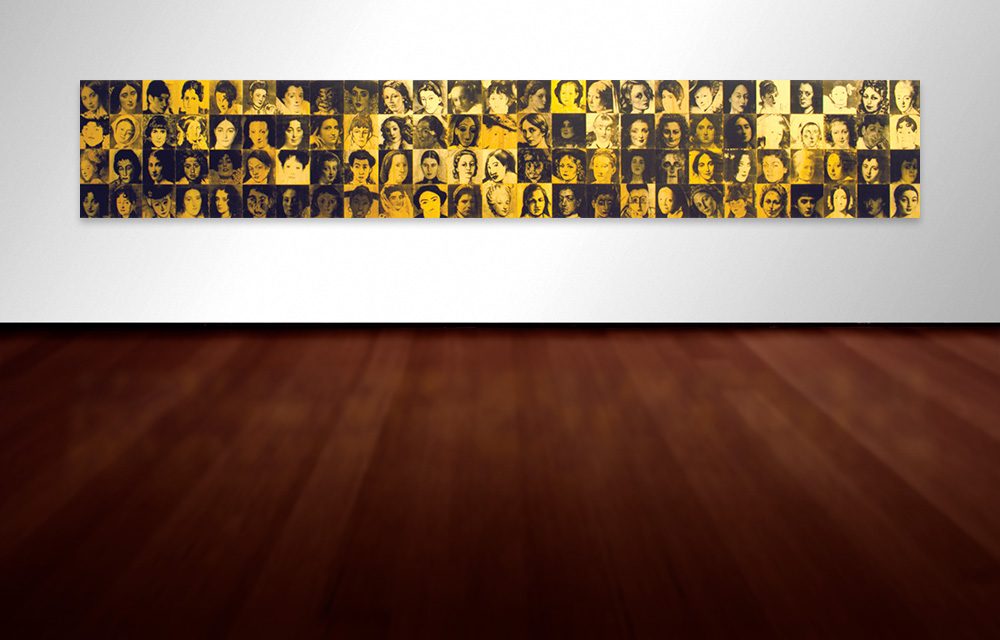


Julie Rrap is one of Australia's leading feminist artists. Since her first exhibition in 1982, she has been consistently committed to the exploration of the role—or absence of roles—of women in the history of art.
Born Julie Parr, Rrap's inversion of her family name declares her oppositional stance. She began working in the art world photographing art works for reproduction and as a participant in her brother, Mike Parr's, performances—experiences that would become essential components of her own practice. In her first-exhibited works, Rrap superimposed photographs of her own naked body over masterworks by Manet, Degas and Rembrandt. 'Unlike the American photographer Cindy Sherman, Rrap does not disguise herself completely as other personae,' Victoria Lynn observes. 'Rather, she intervenes in the original images, her own identity as artist disrupting the given models.'1 By being both artist and model, Rrap is at once subject, object and auteur, a conflation of categories central to her purpose. As George Alexander has written, Rrap's œuvre is 'a one-woman show on the power politics of art'.2
Transpositions II (1994) is one of the artist's seemingly less difficult works, yet also one of her most compelling. 'You can't look at an image, especially an image of a woman, with innocent eyes',3 the artist has said, and in this work she explores the way in which the viewer is implicated in the historical image. This engrossing wallpiece comprises photographs printed on a hundred wood panels of images taken from European portraiture. Apart from a few famous faces, most of the women depicted are nameless, and it is this anonymity that Rrap addresses. It is as if the sitters were released from the paintings in which they are immortalised, prised free from the moment in art history which they typify. We see these faces not as portraits but as women. Self-possession competes with flirtation, intimacy with indifference. What unites each of these faces is the fast nature of their gaze. Each woman locks the viewer with her eyes, arresting us with her selfdom. In a reversal of the role of the model as handmaiden, or subject, of the artist, here art history becomes secondary to the fact of each of these women's lives. Rather than wondering about the artist's relation to the sitter—lover, mother, muse, patron—each subject enters into direct relation with her twenty-first-century onlooker. In this sense, Rrap's intervention is a reclamation, a disruption of art history's masculinist vision. And because the work is by a woman artist, the reciprocating gaze becomes feminine.
The artist considers the 'Transpositions' series a turning point in her practice, as it marks the moment she stopped using herself as model. However, whether using hair, shoes or skin, Rrap's work has continued to centre on a conceptual relationship between the female body, both literal and disembodied, and its technological representation.
- Hannah Fink
Julie Rrap is represented in Australia by Roslyn Oxley9 Gallery, Sydney.